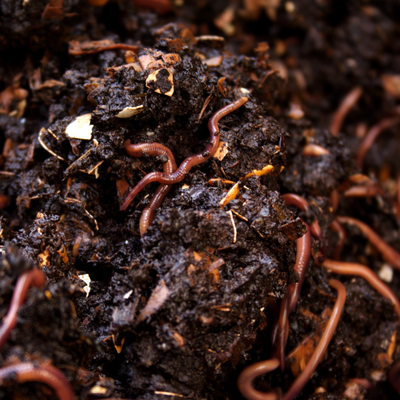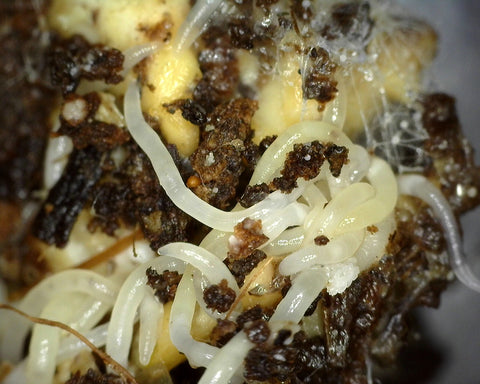
How to Assist the Nutrient Cycle in Your Living Soil
Mark AshworthShare
Our goal in a regenerative, indoor, living soil setting is to replicate nature. Not only environmentally (lights, heat, ventilation, air movement), but also biologically. By providing the soil in our closed-loop system (indoor container/pot) with the beneficial biology found in nature, we are able to improve the speed and efficiency of the nutrient cycle in our soil food web.
What Can Help Cycle Nutrients?

Having a variety of composting worms in your living soil containers is absolutely critical to long-term success with nutrient cycling. Not only do worms produce enzymes to breakdown and consume organic matter, but they also help to aerate soil. Red wigglers are the best value as they're one of the most vigorous eaters and reproducers.
Mycelium

Mycelium is a white root-like structure of fungal hyphae that is sometimes so small it is invisible, but also sometimes extraordinarily vast (over thousands of acres). Mycelium assists in nutrient cycle with a it first secreting an enzyme onto organic matter (its food source) which breaks down the biological polymers into smaller monomers. These simpler, smaller monomer units are then absorbed back into the mycelium.
Springtails (Collembola)

Springtails are essential de-composers in your living soil containers. Their presence means that pathogenic bacteria and fungi are being consumed and other, predator species are fed. Read more about Springtails here.
Pot Worms (Enchytraeids)

These small worms are a whitish color and are beneficial to nutrient cycling and the soil food web because they consume fungi, bacteria and organic matter. They are a de-composer, which also help alleviate the risk of pathogens.
Rove Beetles (Dalotia coriaria)

The Rove Beetle (Dalotia coriaria) is a species of soil-dwelling beetles which feeds on fungus gnats, thrips. Some studies have shown that in conjunction with Hypoapsis miles, they can also provide some level of protection against root aphids. They're also detrivores and will consume organic matter, aiding in the decomposition process and helping to cycle nutrients for your plants. Read more about Rove Beetles here.
Looking to add Rove Beetles to your garden? We carry them here!
Stratiolaelaps scimitus (Hypoaspis miles)

The Stratiolaelaps scimitus (Hypoapsis miles) is a soil-dwelling arthropod that is both a predator to pest larva/pupae and a detritivore. The combination of decomposer and predator makes them an essential part of any living soil ecosystem.
Looking to Add More Bio-Diversity to Your Soil? Checkout our Living Soil Bio-Diversity packs which come loaded with Rove Beetles, Hypoapsis miles and other decomposing species to get your living soil bed cranking.
Read More About These Key Soil-Based Beneficial Insects
- Oribatid Mites (Oribatida)
- Rove Beetles (Dalotia coriaria)
- Stratiolaelaps scimitus (Hypoaspis miles)
- Springtails (Collembola)
- Red Wiggler Worms (Eisenia Fetida)
- Enchytraeidae (Pot Worms)
